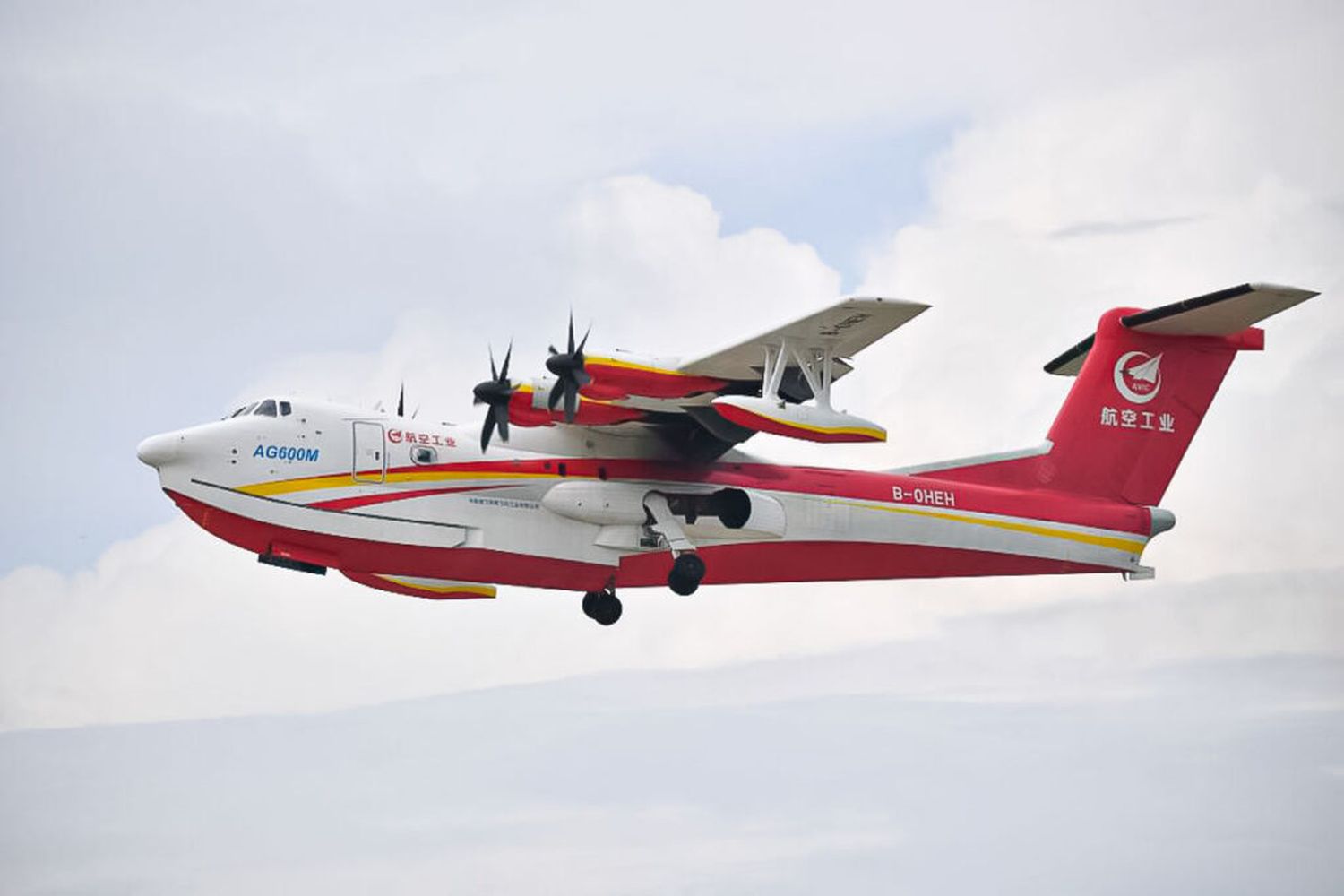China certifies its giant amphibious aircraft AG600 Kunlong
The AG600 Kunlong is the largest seaplane in the world, designed for strategic civil and military missions in China.
In a milestone for China’s aerospace industry, the AG600 Kunlong—a large amphibious aircraft developed by the Aviation Industry Corporation of China (AVIC)—has received its type certificate from the Civil Aviation Administration of China (CAAC), marking the start of its transition to mass production and commercial deployment.
With a wingspan of 38.8 meters, a length of 38.9 meters, and a maximum takeoff weight of 60 tons, the AG600 is the world’s largest civil seaplane by operational weight. Designed for forest fire suppression and maritime search and rescue (SAR) missions, the aircraft addresses strategic needs within China’s national emergency response framework—but it also has clear implications for military operations across the first and second island chains in the South China Sea.
A national development program
The AG600 project officially began in 2009, involving 22 provinces and cities, 292 enterprises and institutions, and 16 universities. Its first land-based flight took place in December 2017, followed by a water takeoff in 2018 and its first open-sea flight in 2020. By 2023, it had already demonstrated firefighting capabilities.
The certification marks not only a technical breakthrough but also a regulatory one, advancing the development of domestic standards for the compliance and certification of civil amphibious aircraft.

AVIC expects to receive the production certificate before August, with the first deliveries slated for October. The AG600 is built on a “one platform, multiple variants” model, allowing for future adaptations to roles such as maritime environmental monitoring, tactical island transport, or offshore resource surveillance.
A multifunctional platform
The AG600 is China’s first large, purpose-built civil aircraft developed under civil airworthiness regulations. Besides being a symbol of industrial capability, it offers a practical solution to the logistical challenges posed by China’s diverse geography—from mountainous regions to vast coastal zones.
Its amphibious configuration—a streamlined upper fuselage with a boat-like hull—enables operation from both conventional runways and bodies of water, including seas with wave heights up to two meters. Dual four-meter-long side floats ensure stability during water taxiing.
Powered by four domestically produced WJ-6 turboprop engines, the aircraft features a retractable tricycle landing gear, reinforcing its operability in hard-to-reach environments.
The AG600 can fly at low altitudes—between 30 and 50 meters—at speeds of just 220 km/h, ideal for precise aerial water drops. It can load up to 12 tons of water in 20 seconds and release it across areas exceeding 4,000 square meters in a single pass.
In SAR operations, it can evacuate up to 50 people in a single mission—even under adverse weather conditions—thanks to its 4,500 km range and 7,600-meter service ceiling.

Military potential and tensions in the South China Sea
Though conceived as a civilian platform, the AG600’s features make it a dual-use asset with significant military applications. Its ability to take off and land at sea makes it especially suitable for operations in remote island areas such as the disputed Paracel, Spratly, and Scarborough reefs in the South China Sea, as well as the Senkaku (Diaoyu) Islands in the East China Sea and the Taiwan-adjacent region.
The aircraft’s tactical value lies in its versatility: it can be used for logistical resupply of forward outposts, medevac, rapid personnel deployment, or maritime patrol in sensitive zones. Its modular design supports potential future adaptations for maritime surveillance, anti-submarine warfare (ASW), or enforcement of exclusive economic zones (EEZs).
These capabilities take on heightened relevance amid growing geopolitical tensions in the Indo-Pacific. China’s expansive territorial claims—rooted in so-called “historical rights” and mapped via the controversial “Nine-Dash Line”—are contested by several regional actors, including Vietnam, the Philippines, Malaysia, Brunei, Taiwan, and Japan.
Meanwhile, the U.S. and its allies have intensified freedom of navigation operations and strengthened their military presence across the so-called “first island chain,” as part of a broader strategy to counter China’s maritime expansion. In this context, the AG600’s operational deployment could bolster China’s logistical reach and strategic mobility in contested island zones—without relying on conventional runways.


Comentarios
Para comentar, debés estar registrado
Por favor, iniciá sesión